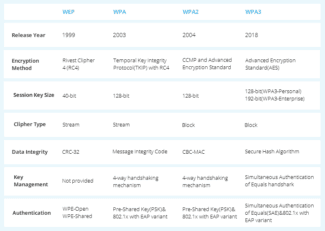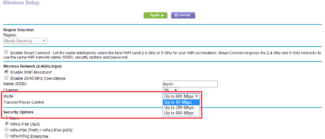802.11ah is nicknamed HaLow. It provides a coverage area of up to 1 km and consumes less power compared to previous inventions. It is possible to transmit data simultaneously on 4 channels. With a single 16 MHz channel, the maximum possible speed is 347 Mbps.

What is Wi-Fi and where it came from
According to the data of We Are Social and Hootsuite at the beginning of 2021, there are 4.66 billion active Internet users in the world. There is often an equal sign between the term Wi-Fi and the Internet. But Wi-Fi is a wireless technology that makes it possible to go online.
You can be 50-100 meters away from a router and access the network simultaneously from multiple devices, which gives a distinct advantage over wired Internet. But Wi-Fi in its original form had a very different purpose.
There are several versions of the origin of the word "Wi-Fi" itself:
- An acronym for "Wireless Fidelity" – wireless fidelity.
- A play on words with a hint of Hi-Fi from "High Fidelity" – high fidelity, used in the context of sound.
- Acronym for Wireless Fidelity Alliance – the name of the manufacturer's company.
- No need to run a cable through the apartment.
- Access possible from devices that do not have a LAN port: phones, tablets, some laptops.
- Mobility: you can enter the network being away from the place of distribution.
- It is easier to connect multiple devices at the same time.
- When using a large number of connections at the same time Internet speed is lost.
- Wi-Fi can affect Bluetooth, microwave ovens when using the same frequency.
- If the router is of an older generation, it is not possible to get the maximum speed declared by the provider.
- Obstacles between the router and the user can interfere with signal transmission.
History of the invention
The progenitor of Wi-Fi was Hedy Lamarr – an American actress and inventor. During World War II, she created technology that made it impossible to track or jam a torpedo. She used technology with pseudo-random frequency change (transmission channel). The musician George Antheil helped her to realize her idea. They developed the "jumping waves" together.
Prior to that, data could only be sent on one frequency, which could lead to interception of the torpedo control. This system was declassified in 1980. This made the knowledge that allowed Wi-Fi to be invented public.
The more familiar format of Wi-Fi was given by John O'Sullivan, a scientist and radio astronomer from Australia. During experiments to investigate a black hole, the need to transmit data wirelessly arose. That's when they remembered Hedy Lamarr's developments and created a semblance of modern Wi-Fi. The data transfer speed of the first invention did not exceed 2 Mbit/s.
Now Wi-Fi Internet connection is made through radio channels of IEEE 802.11 standards. IEEE is an abbreviation of IInstitute of Electrical and Electronics Engineers Institute of Electrical and Electronics Engineers. This association was founded in New York City in 1963 and has been actively developing industry standards which they still adhere to today.
Improvements in Wi-Fi connectivity are continually being made. As of May 2021, six generations of Wi-Fi have already been released.
What is Wi-fi?
Glad to greet you dear reader, in this article we are going to deal with the modern concept – "internet connection via wi-fi". A huge number of users use such a connection, but do not always understand what it is at all and even more so how wi-fi works.
As with most of my articles, I recommend that you read the contents so that you can immediately see what you are talking about and find the information you are interested in faster.
Wi-fi is the ability to transmit data without wires and that's it… Never confuse internet and wi-fi – they are completely different processes and different equipment. You can easily distinguish them if you read the article carefully to the end.
Under the concept of the Internet you can imagine the connection, the ability to exit, to access any sites. And if this Internet connection is passed through a special equipment you can get the so-called wi-fi network, which will pass the same Internet, but without wires and with the ability to connect to it multiple devices at once, for example, "deliver" your Internet access to your cell phone and laptop.
That is wi-fi – a network, which distributes Internet access without wires, through radio channels. It works based on IEEE 802.11 standards, but the network itself does not provide Internet access. Let's find out how to make it work.
Functionality
To create a Wi-Fi network, you need devices with the ability to transmit wireless signals. Devices such as a phone, computer or router can do this. A home router is used to transmit an Internet connection from an external public network to a private home or office network. It provides Internet connectivity to nearby devices that are within wireless range. In addition to a router, another way to use Wi-Fi is to create a Wi-Fi hotspot. Some phones or computers can share their wireless or wired Internet access with other connected devices by broadcasting a signal.
Benefits of Wi-Fi
- Allows network deployment without laying cable, which can reduce the cost of network deployment and/or expansion. Locations where cabling is not possible, such as outdoors and in buildings of historical value, can be served by wireless networks.
- Allows mobile devices to have access to the network.
- Wi-Fi devices are widely available on the market. Compatibility of equipment is guaranteed due to mandatory certification of equipment with the Wi-Fi logo.
- Mobility. You are no longer tied to one place and can use the Internet in any comfortable for you environment.
- Several users from computers, laptops, phones and so on can go to the Internet within the Wi-Fi zone.
- Radiation from Wi-Fi devices at the time of data transfer is an order of magnitude (10 times lower) than that of a cell phone.
- Many devices, such as Bluetooth-enabled devices, etc., and even microwave ovens, operate in the 2.4 GHz band, which impairs electromagnetic compatibility.
- Equipment manufacturers indicate the speed at L1 (OSI), which creates the illusion that the equipment manufacturer overestimates the speed, but in fact in Wi-Fi the service "overhead" is very high. As a result, the L2 (OSI) data rate of a Wi-Fi network is always lower than the advertised L1 (OSI) data rate. The actual speed depends on the share of service traffic, which depends on the presence of physical barriers between the devices (furniture, walls), the presence of interference from other wireless devices or electronic equipment, the position of the devices relative to each other, etc.
- Frequency range and operating limitations are not the same in different countries. Many European countries allow two additional channels, which are banned in the U.S.; Japan has another channel at the top of the range, and other countries, such as Spain, prohibit the use of low-frequency channels. Moreover, some countries, such as Russia, Belarus and Italy, require registration of all outdoor Wi-Fi networks or require registration of a Wi-Fi operator.
- As mentioned above – in Russia, wireless access points as well as Wi-Fi adapters with a WEP greater than 100 mW (20 dBm) are subject to mandatory registration.
- The WEP encryption standard can be relatively easy to break, even with the right configuration (due to the weak robustness of the algorithm). Newer devices support more advanced data encryption protocols WPA and WPA2. The adoption of IEEE 802.11i (WPA2) in June 2004 made the more secure communication scheme available in new equipment possible. Both schemes require a stronger password than those normally assigned by users. Many organizations use additional encryption (e.g. VPN) to protect against intrusion. At the moment, the main method of breaking into WPA2 is password cracking and active KRACK attacks, therefore, it is recommended to use complex alphanumeric passwords to make the task of password cracking as difficult as possible.
- In point-to-point (Ad-hoc) mode, the standard prescribes only the implementation of 11 Mbps (802.11b). WPA(2) encryption is not available, only easy-to-crack WEP.






